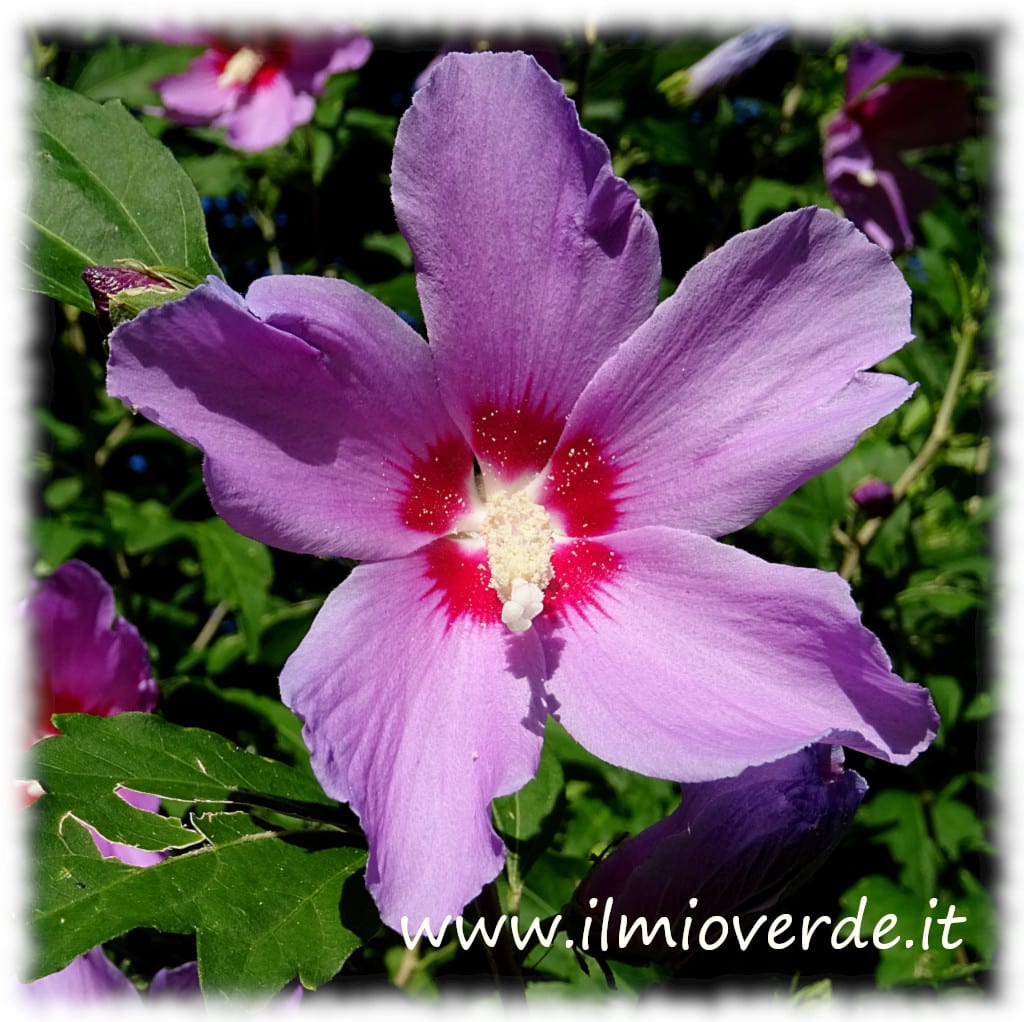Hibiscus syriacus, commonly known as Althea or Rose of Sharon, is a deciduous shrub native to East Asia. It grows to a height of 1–3 metres, with upright branches and ovate leaves. The flowers, ranging in colour from white to blue, pink, or purple, bloom in summer and are highly prized for their beauty.
Varieties
- Hibiscus syriacus ‘Diana’: White flowers with a red centre.
- Hibiscus syriacus ‘Oiseau Bleu’: Blue flowers with a touch of white.
- Hibiscus syriacus ‘Purple Pillar’: Dark purple flowers, ideal for narrow spaces.
- Hibiscus syriacus ‘Red Heart’: Pink flowers with a red heart.
- Hibiscus syriacus ‘Woodbridge’: Pink flowers with white edges.
History
Hibiscus syriacus has historical roots in the Middle East and Asia, where it has been cultivated for centuries. It is often used in ornamental gardens and as a hedging plant. In some cultures, the flower symbolises beauty and love.
Characteristics
The leaves are a deep green, while the flowers can display a range of shades. This plant emits a delicate aroma, particularly when in full bloom. It is hardy and well-suited to various climates.
Climate and Sunlight
Hibiscus syriacus thrives in temperate climates and can withstand temperatures as low as -15 °C. It is ideal for regions with mild winters and hot summers. It requires full sun or partial shade for optimal blooming, with at least 6 hours of direct sunlight daily.
Soil
This plant prefers well-drained soil rich in organic matter. A slightly acidic to neutral substrate is ideal for healthy growth.
Watering and Fertilisation
During dry periods, regular watering is recommended to keep the soil moist but not waterlogged. Adequate watering promotes abundant blooming. Fertilise in spring with a balanced fertiliser to encourage growth. During the flowering period, a fertiliser specifically for flowering plants can enhance results.
Propagation
Propagation can be done through cuttings in summer or by sowing seeds in spring. Both methods are effective and produce healthy new plants.
Care and Useful Tips
To keep the plant healthy, prune dead or damaged branches in autumn. This promotes vigorous growth and abundant flowering.
Diseases
Hibiscus syriacus can be susceptible to fungal diseases and aphid infestations. Regular monitoring and prompt treatment with appropriate solutions are crucial.
Culinary Use
The flowers of Hibiscus syriacus can be used as decorative elements for dishes and drinks. However, it is important to note that they are not edible.
Immagine di Davide Giuseppe Zannini
